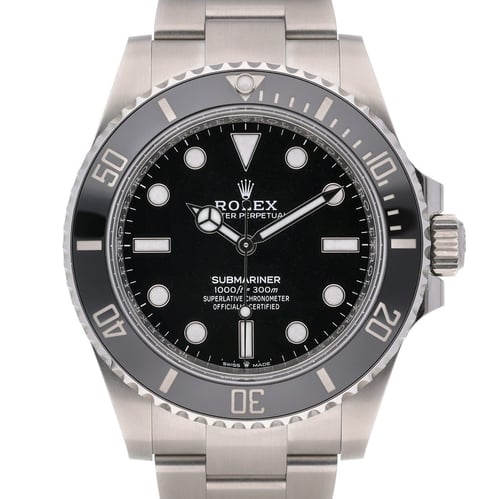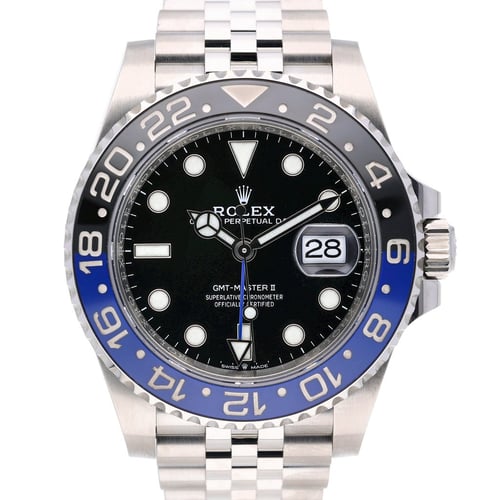When shopping for a watch, particularly if you’re an active individual or frequently around water, you might come across two common terms: water-resistant and waterproof. While these terms might sound similar, they have significant differences that can affect how you use your timepiece in various environments. Understanding these distinctions is key to maintaining your watch's performance and longevity. In this article, we’ll explore what sets water-resistant and waterproof watches apart, how water resistance levels work, and why it matters when choosing the right watch.

When a watch is labelled as water-resistant, it means that it can withstand exposure to a certain level of moisture or water without getting damaged. However, water resistance is not an absolute term, and no watch is truly impermeable to water under all conditions.
Water-resistant watches are designed to handle splashes of water, rain, or brief immersion, but they aren't meant for prolonged exposure to high-pressure water. The level of water resistance is typically indicated by the depth (in metres or feet) to which the watch can be submerged without allowing water inside the case.
For instance, common water-resistance ratings include:
30 metres (3 ATM): Safe for everyday use, such as handwashing or light splashes, but not suitable for swimming or submersion.
50 metres (5 ATM): Can handle some light swimming or showering but is not recommended for diving.
100 metres (10 ATM): Suitable for swimming, snorkelling, and other recreational water activities.
200 metres (20 ATM): Safe for more intense water activities like scuba diving or free diving.
The term waterproof implies that the watch is completely impervious to water under any conditions. However, in reality, no watch is entirely waterproof. Watches may be marketed as waterproof, but this is often a misleading term because no watch can withstand water indefinitely or in every situation.
In fact, the term waterproof is generally avoided by reputable watch manufacturers today, as it can give users a false sense of security. ISO standards for watch water resistance have phased out the use of “waterproof,” replacing it with specific water-resistance ratings that indicate the actual conditions the watch can endure.

While both terms refer to the ability of a watch to withstand water, water-resistant watches are built to resist water to a certain extent, while waterproof is a term that suggests total water protection, which in reality doesn’t exist for watches.
When considering the water-resistance rating of a watch, it’s important to know that the rating doesn’t necessarily indicate the depth to which the watch can be worn underwater in everyday situations. For example, a watch rated at 30 metres water resistance is not designed for deep-sea diving but rather to withstand splashes or rain.
Here’s a breakdown of common water-resistance ratings and what activities they are suitable for:
30 Metres (3 ATM): Splash-resistant and safe for rain, handwashing, and everyday wear. Not suitable for swimming or full submersion.
50 Metres (5 ATM): Suitable for light swimming but not for diving or prolonged immersion.
100 Metres (10 ATM): Ideal for recreational swimming, snorkelling, and most surface water sports. However, it's not intended for scuba diving.
200 Metres (20 ATM): Suitable for more intense water activities, including scuba diving, but only to moderate depths.
300 Metres (30 ATM) or more: Watches rated at this level are typically diving watches that can handle deep-sea diving. These watches usually feature screw-down crowns, thicker cases, and other mechanisms to ensure protection against water pressure at extreme depths.
To keep your water-resistant watch in optimal condition, proper care is essential, especially if you frequently expose it to water. Here are a few tips to maintain the water resistance of your watch:
Check the Seals: The water resistance of a watch relies on gaskets and seals that prevent water from entering the case. Over time, these seals can degrade, so it’s recommended to have your watch’s seals checked and replaced regularly, especially if you swim or dive frequently.
Screw-Down Crown: Many watches designed for higher water resistance feature a screw-down crown, which provides an extra layer of protection by sealing the opening where water could enter. Always ensure the crown is fully screwed down before exposing the watch to water.
Avoid Extreme Conditions: While a watch may be rated for swimming or diving, it's best to avoid exposing it to extreme conditions, such as hot showers, saunas, or rapid temperature changes, as this can compromise the integrity of the seals.
Regular Servicing: Like any precision instrument, water-resistant watches require regular servicing to maintain their water resistance. This typically involves checking and replacing seals, lubricating gaskets, and pressure testing the case.
A water-resistant watch is ideal for those who live an active lifestyle or need a watch that can handle the occasional splash or swim. Whether you’re a diver, swimmer, or someone who spends a lot of time outdoors, choosing a watch with the right level of water resistance ensures that your timepiece remains functional and protected in wet environments.
Diving watches, such as the Rolex Submariner, Omega Seamaster, or Tudor Pelagos, are built to withstand extreme water pressure and are suitable for serious underwater activities. Meanwhile, many everyday watches with a 30 to 50-metre rating offer enough water resistance for daily use without the risk of water damage.

Purchasing a second-hand water-resistant watch offers excellent value for money, particularly if you choose models from reputable brands like Rolex, Omega, or Tudor. When buying pre-owned watches from a trusted dealer like BQ Watches, you can be sure that the watch has been carefully inspected, authenticated, and serviced to ensure it maintains its water resistance rating.
At BQ Watches, we offer a wide selection of pre-owned water-resistant watches for those who value quality, durability, and performance. Every watch in our collection is thoroughly tested to meet the original manufacturer’s specifications, so you can have confidence in its water resistance.